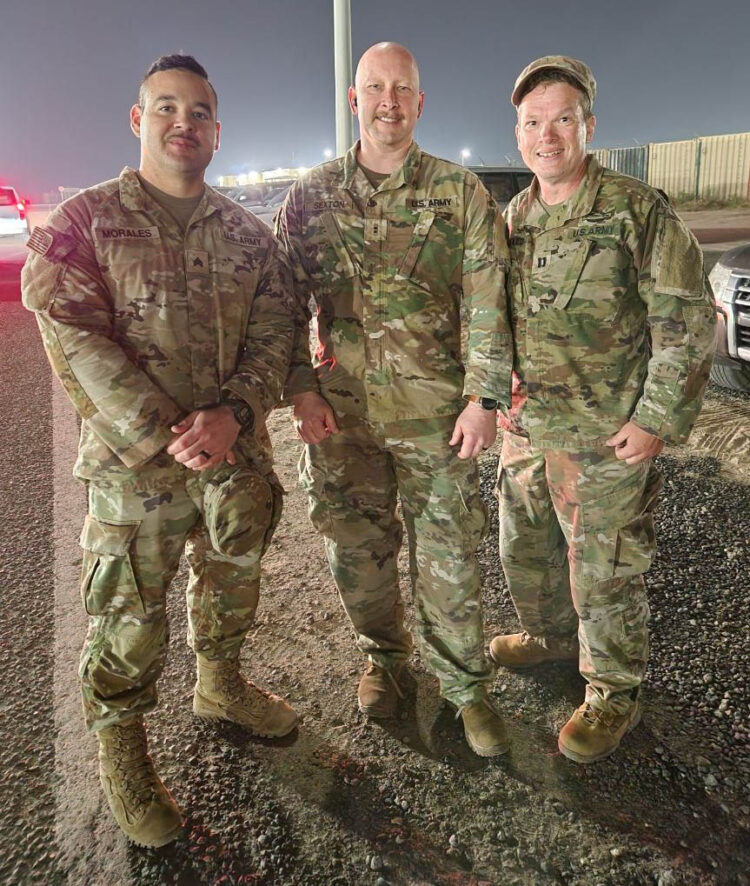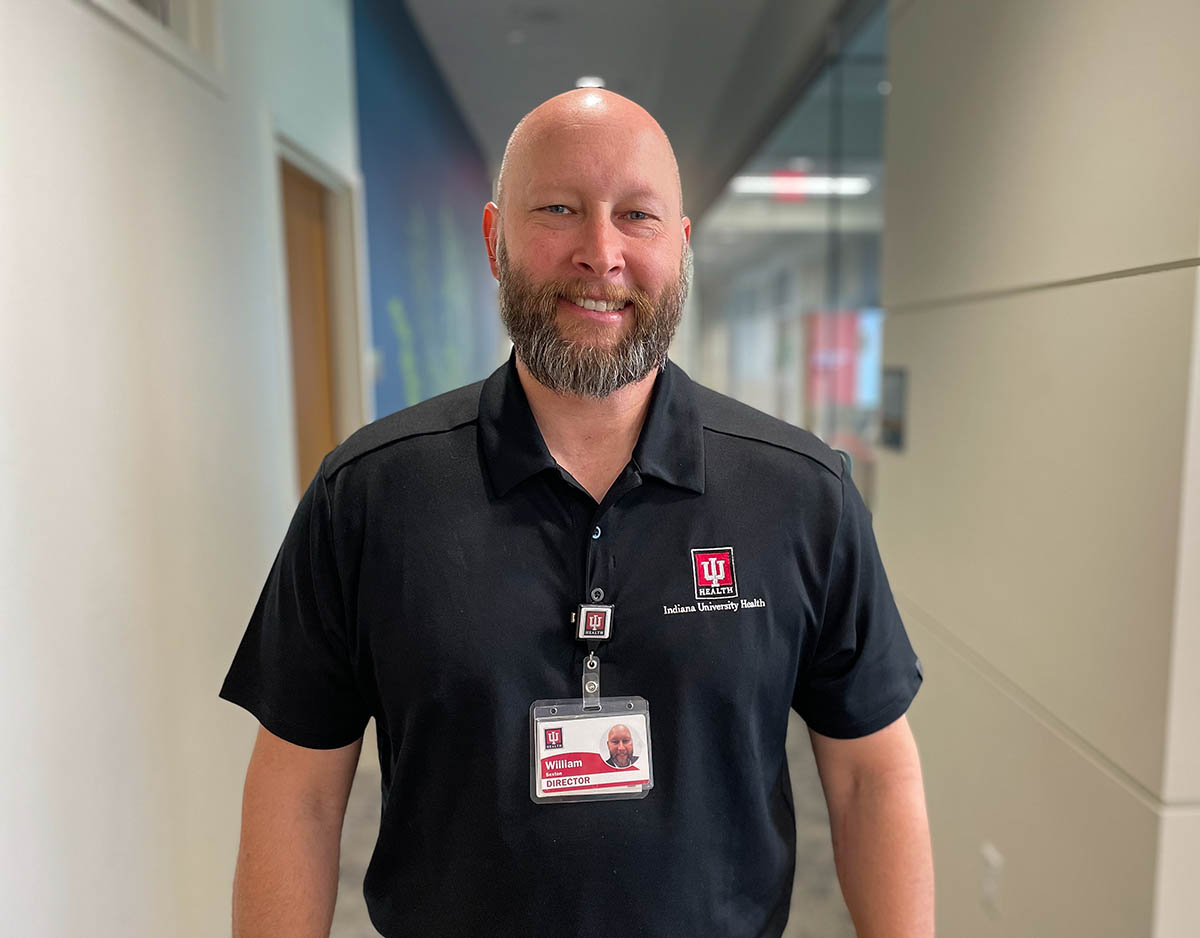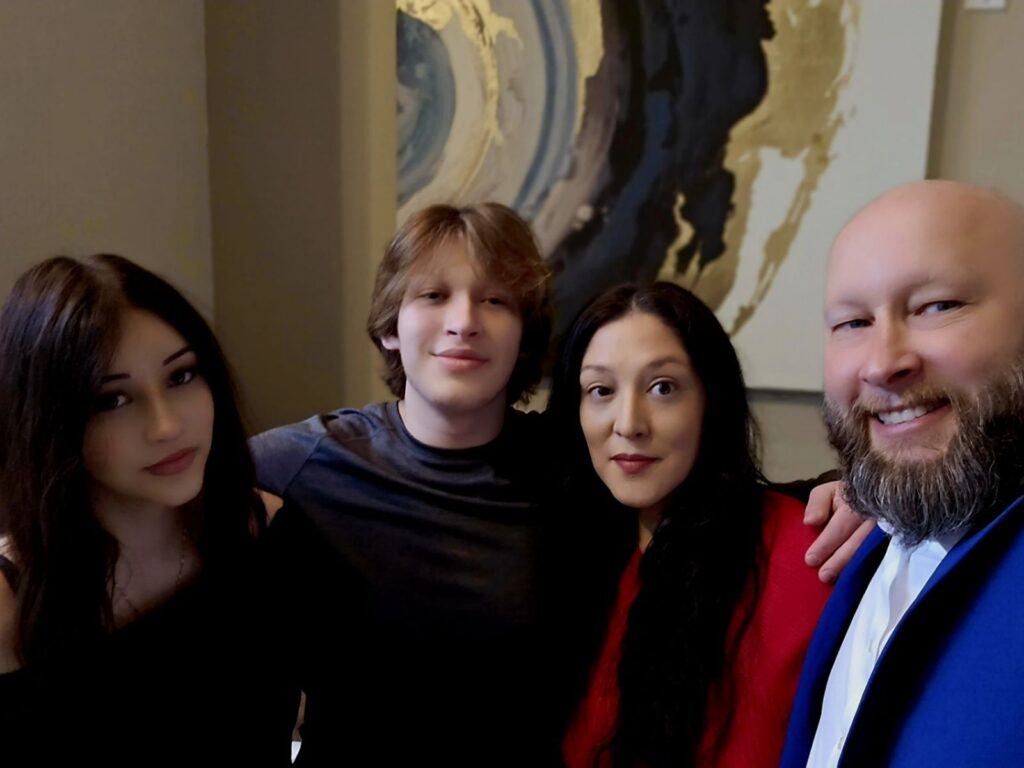Writer / Charlotte Stefanski
Will Sexton has always been drawn to the human body – how it works and the science behind it.
“Sports and human movement were always interesting to me,” he said. “It just made sense to me.”
When he enrolled at Indiana University he studied kinesiology, the science of movement, and exercise science for his undergraduate degree, then pursued his master’s degree in exercise physiology.
But those weren’t his only interests. Sexton had always wanted to enlist in the military.
“I had always wanted to but my mother was always afraid of it, so she tried to talk me out of it,” Sexton explained. “But I still had that itch.”
He officially joined the United States Army in 2003, and for the next 13 years, 10 months and 25 days (not that he counted), he was on active duty.
After that stint, his family of five decided it was time to settle down somewhere. First, Sexton took an assistant director of imaging position at Texas Children’s Hospital. Four years later he moved back to Indiana, and joined Terre Haute Regional Hospital as director of imaging services and special diagnostics. His family lived in Avon because his wife was a teacher in Zionsville, and IU Health West Hospital seemed like the perfect fit for him.

“I was like, ‘I’d love to get an opportunity there,’ and then about a year and a half later it opened up, and I was like, ‘I have to,’” Sexton said. “I felt very fortunate to get that opportunity.”
Sexton officially joined the IU Health West team as director of imaging services in August 2022, but within the span of a few weeks, active duty would call again, and he was off to Kuwait.
He’s now officially back and working to get reacquainted with the IU Health West team.
Discovering Imaging in the Army
Sexton was 29 with a child on the way when he first enlisted in the Army, and while leaping out of planes looked fun, he decided to stay in the medical field to grow and share his expertise.
The Army had a wide array of roles both in and out of health care, and radiology piqued his interest. As someone who had broken bones and had strains, it seemed like the perfect field for Sexton.
His traditional schooling in Indiana was much different from training in the military. He explained that the military streamlines all its medical training, whereas in college, students have plenty of book work, and get a deep understanding and a lot of knowledge from reading.
“In the Army everything is very cut and dry,” he said. “It’s a methodology more than anything. You’re thrown into it and expected to perform, and so your development and your knowledge comes from your experiences, versus learning from a book.”
Luckily for Sexton, he already had in-depth knowledge about the body and bones from schooling. While others had trouble with terms and names, he was on top of it.
His first duty station was in Grafenwöhr, Germany, where he was the only X-ray technologist for his first three years. Eventually the team grew to five and shot about 20 to 25 films per day, which gave him plenty of free time.
Sexton then went on to receive training in nuclear medicine with both the U.S. Navy and Brooke Army Medical Center. He was then stationed at Fort Knox for about 14 months, but then decided to re-enlist, and went back to the Brooke Army Medical Center in Texas to become director of imaging services.
“It finally got to the point where I felt like I’d outgrown my role and there was nowhere to go, unless I was going to do more Army activities – which, at 40 years old, most people retire,” Sexton said.
He shifted gears, going into the Army Reserve. Now he’s a transportation mobility warrant officer, tracking large movements for the Army.
“It’s my job to make the timeline from the port to the fight,” he said. “That’s what I did in my last deployment. I tracked all the movements in and out of Kuwait, in and out of the Middle East.”
 Back on U.S. Soil
Back on U.S. Soil
Sexton officially returned to IU Health West this October, resuming his role as director of imaging. Within that role, he serves as the strategic leader for radiology.
“We’re trying to keep a pulse on what’s happening in the imaging world, as well as what’s happening at IU Health West, melding the two together to look ahead down the road so that we can meet the needs of patients and doctors,” he said.
IU Health West’s imaging team is the only 24/7 imaging department in the IU Health Indianapolis Suburban Region, including IU Health North, Saxony, Tipton and West hospitals. This includes all forms of imaging, like CT, MRI, radiology and ultrasounds.
It’s one of the region’s busiest departments, Sexton said, with a large capacity of two MRI machines and three CT units.
Sexton is also a bit playfully competitive with other departments in the hospital, and he’s always looking for ways to encourage and improve his department. His natural curiosity also plays into his leadership role.
“Leadership is different every day,” he said. “You have your standard goals – you want to mentor people, change and lead the way. But every day is a new day. When you walk in, you have a new set of challenges. There’s always something that’s boiling in the background. That’s exciting to me.”
Now that he’s back, Sexton is getting reintegrated with his role and team, and working to build a better grasp on it.
“Our team is fantastic,” he said. “They do a great job. Our culture is wonderful and that’s a credit to our leadership.”




 Back on U.S. Soil
Back on U.S. Soil

